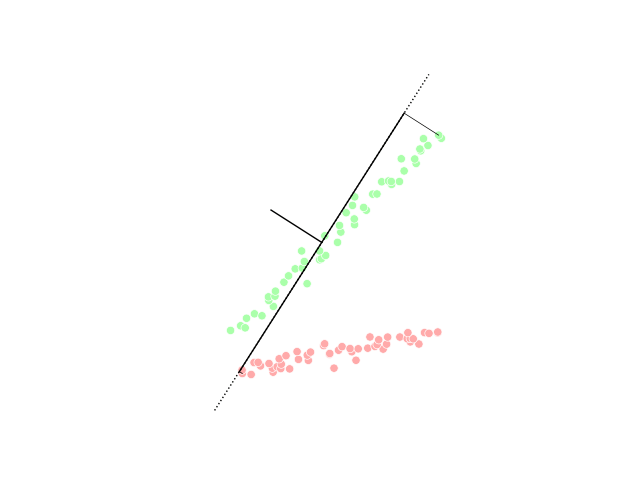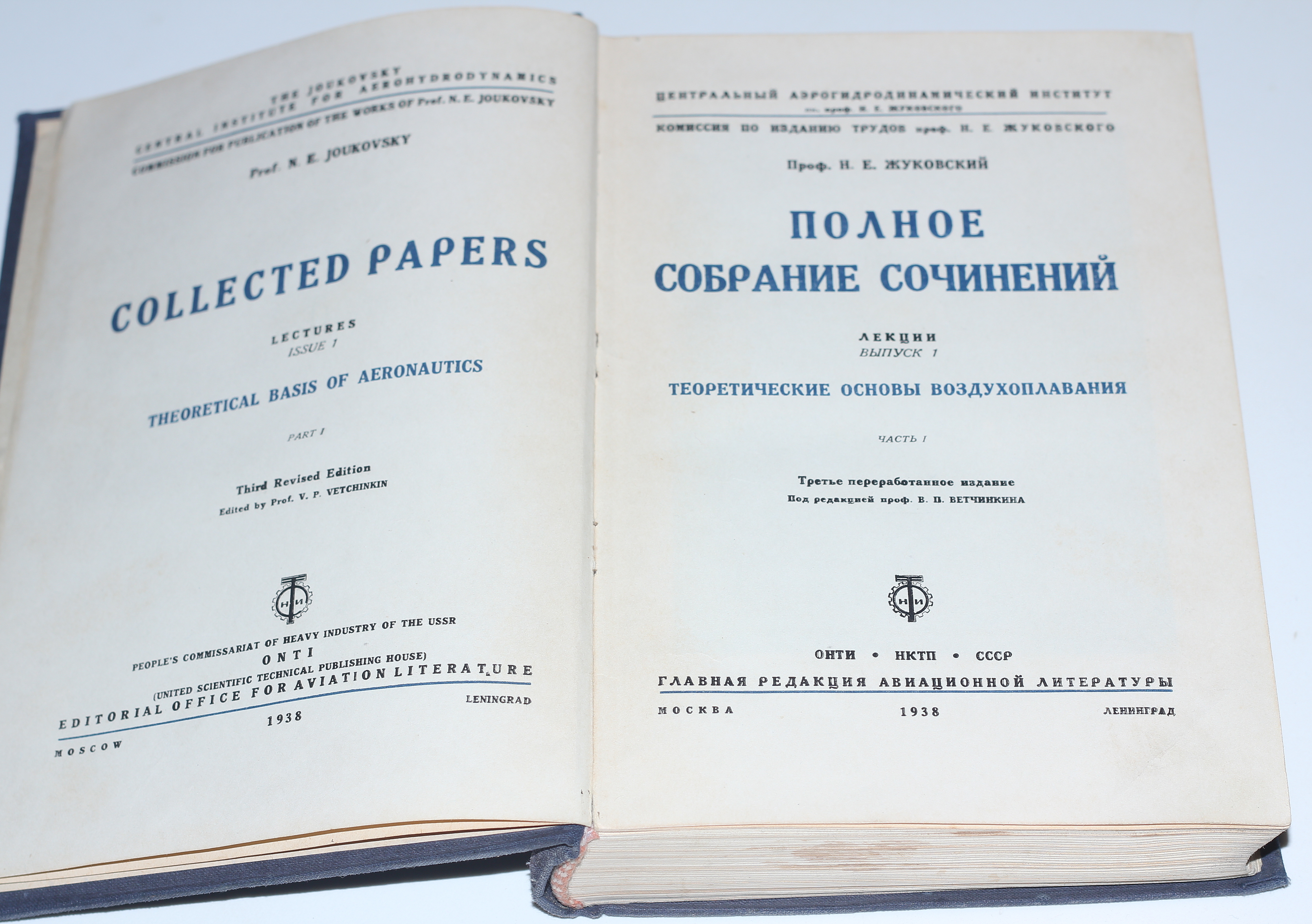|
Dynamic Mode Decomposition
Dynamic mode decomposition (DMD) is a dimensionality reduction algorithm developed by Peter Schmid in 2008. Given a time series of data, DMD computes a set of modes each of which is associated with a fixed oscillation frequency and decay/growth rate. For linear systems in particular, these modes and frequencies are analogous to the normal modes of the system, but more generally, they are approximations of the modes and eigenvalues of the composition operator (also called the Koopman operator). Due to the intrinsic temporal behaviors associated with each mode, DMD differs from dimensionality reduction methods such as principal component analysis, which computes orthogonal modes that lack predetermined temporal behaviors. Because its modes are not orthogonal, DMD-based representations can be less parsimonious than those generated by PCA. However, they can also be more physically meaningful because each mode is associated with a damped (or driven) sinusoidal behavior in time. Ove ... [...More Info...] [...Related Items...] OR: [Wikipedia] [Google] [Baidu] |
Dimensionality Reduction
Dimensionality reduction, or dimension reduction, is the transformation of data from a high-dimensional space into a low-dimensional space so that the low-dimensional representation retains some meaningful properties of the original data, ideally close to its intrinsic dimension. Working in high-dimensional spaces can be undesirable for many reasons; raw data are often sparse as a consequence of the curse of dimensionality, and analyzing the data is usually computationally intractable (hard to control or deal with). Dimensionality reduction is common in fields that deal with large numbers of observations and/or large numbers of variables, such as signal processing, speech recognition, neuroinformatics, and bioinformatics. Methods are commonly divided into linear and nonlinear approaches. Approaches can also be divided into feature selection and feature extraction. Dimensionality reduction can be used for noise reduction, data visualization, cluster analysis, or as an interme ... [...More Info...] [...Related Items...] OR: [Wikipedia] [Google] [Baidu] |
Prony's Method
Prony analysis (Prony's method) was developed by Gaspard Riche de Prony in 1795. However, practical use of the method awaited the digital computer. Similar to the Fourier transform, Prony's method extracts valuable information from a uniformly sampled signal and builds a series of damped complex exponentials or damped sinusoids. This allows for the estimation of frequency, amplitude, phase and damping components of a signal. The method Let f(t) be a signal consisting of N evenly spaced samples. Prony's method fits a function :\hat(t) = \sum_^ A_i e^ \cos(\omega_i t + \phi_i) to the observed f(t). After some manipulation utilizing Euler's formula, the following result is obtained. This allows more direct computation of terms. : \begin \hat(t) &= \sum_^ A_i e^ \cos(\omega_i t + \phi_i) \\ &= \sum_^ \frac A_i \left( e^e^ + e^e^\right) \end where: * \lambda^_i = \sigma_i \pm j \omega_i are the eigenvalues of the system, * \sigma_i = -\omega_ \xi_i are the damping c ... [...More Info...] [...Related Items...] OR: [Wikipedia] [Google] [Baidu] |
Eigenvalue Decomposition
In linear algebra, eigendecomposition is the factorization of a matrix into a canonical form, whereby the matrix is represented in terms of its eigenvalues and eigenvectors. Only diagonalizable matrices can be factorized in this way. When the matrix being factorized is a normal or real symmetric matrix, the decomposition is called "spectral decomposition", derived from the spectral theorem. Fundamental theory of matrix eigenvectors and eigenvalues A (nonzero) vector of dimension is an eigenvector of a square matrix if it satisfies a linear equation of the form :\mathbf \mathbf = \lambda \mathbf for some scalar . Then is called the eigenvalue corresponding to . Geometrically speaking, the eigenvectors of are the vectors that merely elongates or shrinks, and the amount that they elongate/shrink by is the eigenvalue. The above equation is called the eigenvalue equation or the eigenvalue problem. This yields an equation for the eigenvalues : p\left(\lambda\right) = \det\l ... [...More Info...] [...Related Items...] OR: [Wikipedia] [Google] [Baidu] |
Synth Spec
A synthesizer (also spelled synthesiser) is an electronic musical instrument that generates audio signals. Synthesizers typically create sounds by generating waveforms through methods including subtractive synthesis, additive synthesis and frequency modulation synthesis. These sounds may be altered by components such as filters, which cut or boost frequencies; envelopes, which control articulation, or how notes begin and end; and low-frequency oscillators, which modulate parameters such as pitch, volume, or filter characteristics affecting timbre. Synthesizers are typically played with keyboards or controlled by sequencers, software or other instruments, and may be synchronized to other equipment via MIDI. Synthesizer-like instruments emerged in the United States in the mid-20th century with instruments such as the RCA Mark II, which was controlled with punch cards and used hundreds of vacuum tubes. The Moog synthesizer, developed by Robert Moog and first sold in 1964, ... [...More Info...] [...Related Items...] OR: [Wikipedia] [Google] [Baidu] |
Q Periodic Noise
Q, or q, is the seventeenth letter of the Latin alphabet, used in the modern English alphabet, the alphabets of other western European languages and others worldwide. Its name in English is pronounced , most commonly spelled ''cue'', but also ''kew'', ''kue'' and ''que''. History The Semitic sound value of Qôp was (voiceless uvular stop), and the form of the letter could have been based on the eye of a needle, a knot, or even a monkey with its tail hanging down. is a sound common to Semitic languages, but not found in many European languages. Some have even suggested that the form of the letter Q is even more ancient: it could have originated from Egyptian hieroglyphics. In an early form of Ancient Greek, qoppa (Ϙ) probably came to represent several labialized velar stops, among them and . As a result of later sound shifts, these sounds in Greek changed to and respectively. Therefore, qoppa was transformed into two letters: qoppa, which stood for the number 90, ... [...More Info...] [...Related Items...] OR: [Wikipedia] [Google] [Baidu] |
Joukowsky Karman Vortex Street Ps EV Real
Nikolay Yegorovich Zhukovsky ( rus, Никола́й Его́рович Жуко́вский, p=ʐʊˈkofskʲɪj; – March 17, 1921) was a Russian scientist, mathematician and engineer, and a founding father of modern aero- and hydrodynamics. Whereas contemporary scientists scoffed at the idea of human flight, Zhukovsky was the first to undertake the study of airflow. He is often called the ''Father of Russian Aviation''. The Joukowsky transform is named after him, while the fundamental aerodynamical theorem, the Kutta–Joukowski theorem, is named after both him and German mathematician Martin Kutta. Life Zhukovsky was born in the village of Orekhovo, Vladimir Governorate, Russian Empire. In 1868, he graduated from Moscow University where he studied under August Davidov. From 1872, he was a professor at the Imperial Technical School. In 1904, he established the world's first Aerodynamic Institute in Kachino near Moscow. He was influenced by both Ernst Mach and his son ... [...More Info...] [...Related Items...] OR: [Wikipedia] [Google] [Baidu] |



